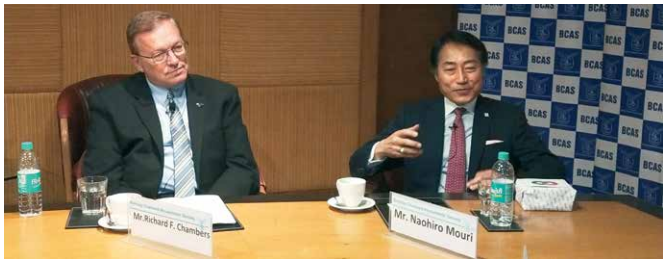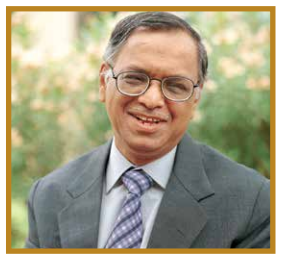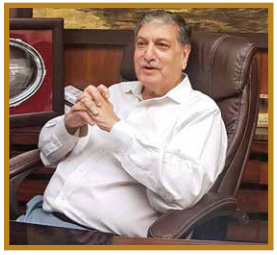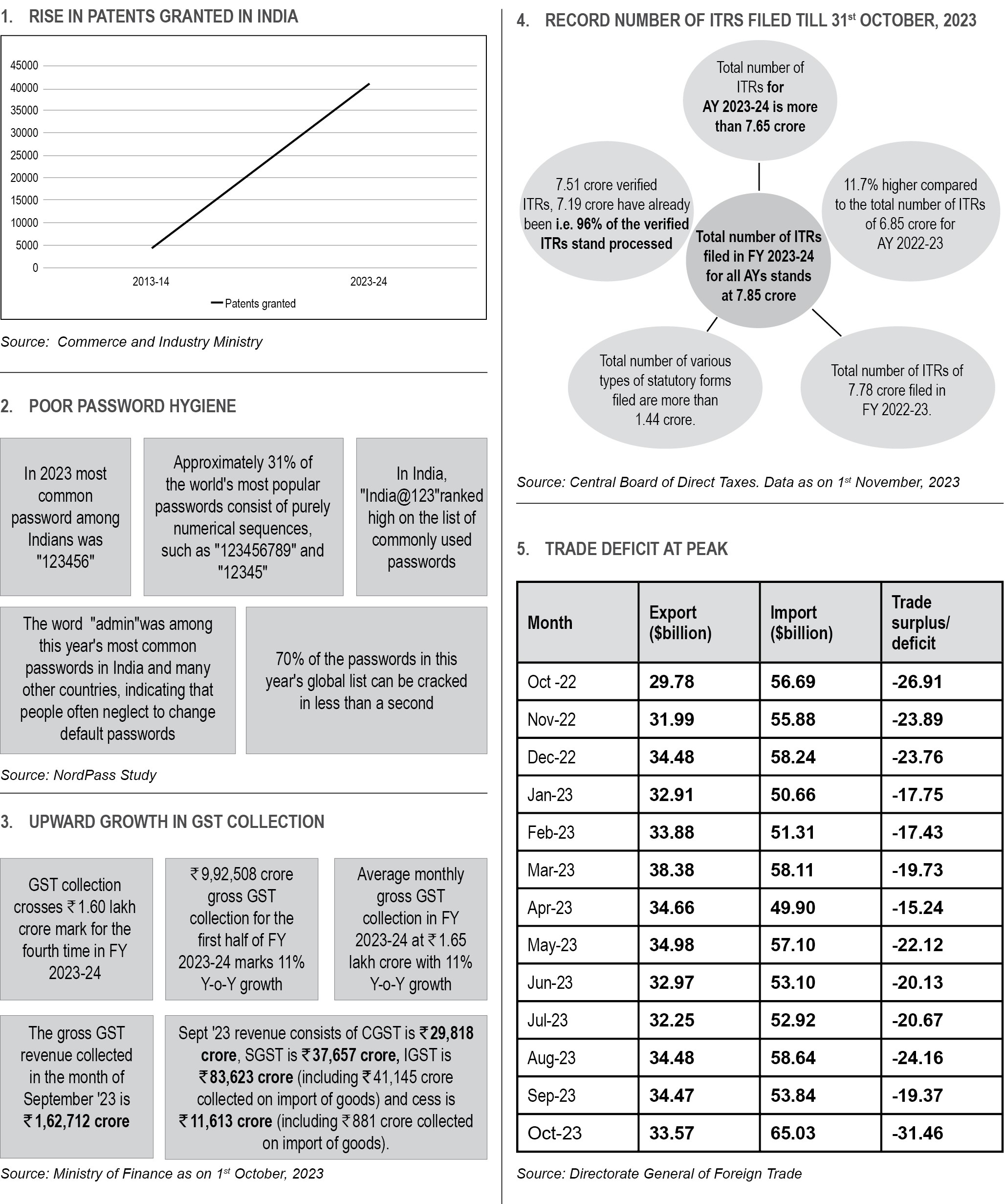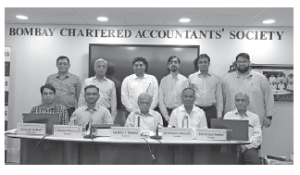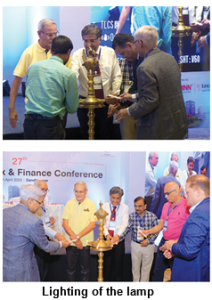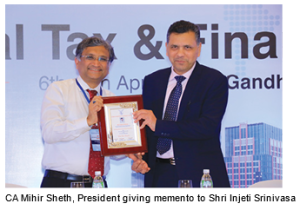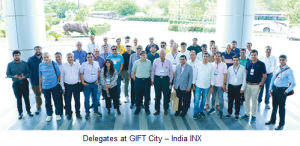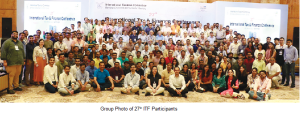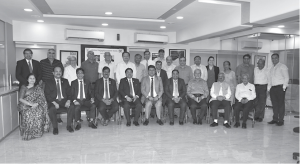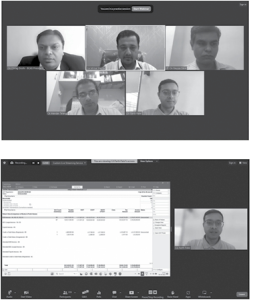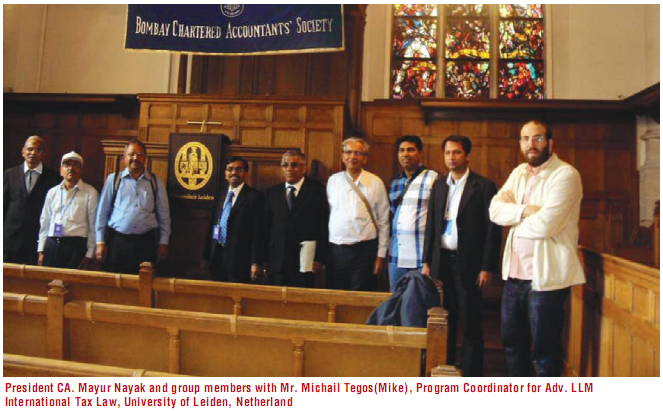1.8 It is therefore, strongly suggested that section 10(23FB) should be suitably amended to:
a. replace the reference to VCFs by AIFs;
b. extend the provisions to category II & category III AIFs;
c. extend the pass through status to all income of an AIF.
1.9 Similarly, clause (i) of the proviso to section 56(2)(viib) should be suitably amended to extend the exemption to category II & category III AIFs also.
2. Representation on Section 40A(2)(a)
2.1 The Finance Act, 1968 had introduced a new section 40A in the Income-tax Act, 1961 (‘ITA’) with effect from 1 April 1968. Section 40A(2) provides that an expenditure incurred in business or profession for which payment has been or is to be made to the tax-payer’s relatives or associate concerns is liable to be disallowed in computing the profits of the business or profession to the extent the expenditure is considered to be excessive or unreasonable. The reasonableness of any expenditure is to be judged having regard to the fair market value of the goods, services or facilities for which the payment is made for the legitimate needs of the business or profession or the benefit delivered by, or accruing to, the tax-payer from the expenditure. Such portion of the expenditure which, in the opinion of the Income-tax Officer, is excessive or unreasonable is to be disallowed in computing the profits of the business or profession.
2.2 The Section was inserted with the object to check evasion of tax through excessive or unreasonable payments to relative or any other specified person. The relevant extracts of the Departmental Circular – Circular No. 6-P, Dated 6-7-1968, whereby this Section was introduced, are as under: “Where payment for any expenditure is found to have been made to a relative or associate concern falling within the specified categories, it will be necessary for the Income-tax Officer to scrutinise the reasonableness of the expenditure with reference to the criteria mentioned in the section.
The Income-tax Officer is expected to exercise his judgment in a reasonable and fair manner. It should be borne in mind that the provision is meant to check evasion of tax through excessive or unreasonable payments to relatives and associate concerns and should not be applied in a manner which will cause hardship in bona fide cases.”
2.3 The Assessing officer had all discretion to ensure that payment made or expenditure incurred is based on fair market rates and hence there was no warrant to amend the stated position.
2.4 With the recent insertion of Proviso to sub section (2)(a) of Section 40A by the Finance Act, 2012, w.e.f. 1-4-2013, no disallowance under this clause on account of expenditure being excessive or unreasonable having regard to the fair market value of good, services or facilities shall be made in respect of Specified Domestic Transaction [SDT] referred to in section 92BA, if such transaction is at arm’s length price (‘ALP’) as defined in clause (ii) of section 92F. Hence, with the insertion of this proviso, the section has extended the applicability of the specific concept of arm’s length price instead of a fair market value to determine the value of domestic related party transactions.
2.5 The principles of ALP as propagated by OECD in the context of International Transfer Pricing are purely theoretical and far from reality.
All the methods recommended to achieve results are based on the data base available in public domain, which does not exist and such results are used for Rent-seeking and causes undue harassment to the taxpayers and also increases the compliance costs on the tax payer.
2.6 The limit of payment in excess of Rs. 5 crores is absolutely unrealistic and burdensome as such payment would include even purchase of goods.
2.7 The Administration in India even is not geared up to handle such matters as the law requires reference to T.P.O. which is a specialized wing, which does not exist all over India.
2.8 Finally, domestic Transfer Pricing provisions are introduced in various jurisdictions which are concerned with allocation of Income-tax between Federal and State Governments. India does not have such a system of taxation. In India, Income-tax is recovered only under an all India enactment, administered by Central Government alone and hence there is no allocation of taxing rights granted to various States. It is only after collection of taxes, such collections are distributed amongst the States based on the recommendations of Finance Commission and this has been working well. If at all Domestic Transfer Pricing provisions are required then the principle to be followed should be to ensure that payment made by one tax payer, to another should be subject to full taxation at maximum marginal rate and there should not be any arbitrary apportionment to save taxes. If that is achieved, then the tax officer and tax payer should not be overburdened with compliance of documentation requirement.
2.9 It is therefore strongly recommended that only the transactions of purchase and sale of goods and services should be subject to benchmarking in accordance with the arm’s length methods prescribed under Indian Transfer Pricing regulations. Hence such provisions could be restricted to tax payers availing Chapter VIA deductions or exemptions u/s 10AA but should not be extended to payments covered by Section 40A(2) of the ITA. However, the extension of these provisions to all expenditure incurred by tax-payer on payments to its relatives or associate concerns leads to absurdity. One cannot determine the arm’s length price that should have been paid on various transactions, since the payment may be based on various factors and considerations, like the business market scenario, competition, each individual’s experiences, intellect, etc.
2.10 A few such examples have been listed below, wherein the benchmarking of such transactions may be impossible using arm’s length principle:
a) Managerial Remuneration
b) Services provided free of cost by tax holiday units
c) Applicability of SDT to Companies falling under Presumptive taxation
d) Allocation of expenses between the group entities, following consistent principles and allocation keys
e) Joint Development Agreement
f) Project Management Fees
g) ESOP
h) Corporate Guarantees for the group entities
i) Maintenance and Administrative charged and shares services
Alternatively, it is also suggested:
2.11 The second proviso to Section 92C(4) permits single track adjustment and prohibits consequential adjustment in the hands of the other party. This provision is made applicable to SDT as well. As a result, disallowance of expenditure in the hands of one related party does not mean that there would be co-relative reduction in the hands of recipient. Recipient will be assessed with reference to actual income as earned, even assuming entire expenditure is disallowed in hands of related party. This approach of revenue will lead to unjust enrichment of the State at the cost of the innocent taxpayer.
2.12 It is recommended that even if the above provisions are made applicable and deduction on account of payment to a related party is reduced by application of SDT provisions, the related party’s income should also automatically stand reduced to that extent.
3. Amendments required in Section 47(xiii), (xiiib) and (xiv)
3.1 Section 47 contains provisions in respect of Transactions not regarded as ‘transfer’ for the purposes of capital gains.
3.2 Section 47(xiii) provides that any transfer of a capital asset or intangible asset by a firm to a company as a result of succession of the firm by a company in the business carried on by the firm, would be an exempt transfer:
provided that the aggregate of the shareholding in the company of the partners of the firm is not less than fifty per cent of the total voting power in the company and their shareholding continues to be as such for a period of five years from the date of the succession;
3.3 A similar condition regarding period of five years is provided in section 47(xiiib) and Section 47(xiv).
3.4 It is submitted that in today’s fast changing business environment, no useful purpose is being served by keeping a long period of five years for continuing shareholding.
3.5 It is, therefore, strongly suggested that the period of continuing shareholding should be reduced to 2 years from 5 years presently prescribed. This would help the reorganisation / restructuring of small and medium enterprises without fear of losing the exemption.
4. Deemed speculation loss in case of companies – Explanation to Section 73
4.1 As per the provisions of section 73 of the Act, any loss, computed in respect of a speculation business carried on by the assessee, cannot be set off except against profits and gains, if any, of another speculation business.
4.2 As per Explanation 2 to section 28 of the Act, where speculative transactions carried on by an assessee are of a nature so as to constitute a business, the business (referred to as “speculation business”) shall be deemed to be distinct and separate from any other business.
4.3 As per Section 43(5) of the Act, “speculative transaction” means a transaction in which a contract for the purchase or sale of any commodity, including stocks and shares, is periodically or ultimately settled otherwise than by the actual delivery or transfer of the commodity or scrips.
4.4 Accordingly, speculative business is normally understood as business in respect of transactions where settlement takes place without actual delivery.
4.5 However, as per Explanation to section 73 of the Act, where any part of the business of a company (other than a company whose gross total income consists mainly of income which is chargeable under the heads, “Interest on securities”, “Income from house property”, “Capital gains” and “Income from other sources” or the company the principal business of which is the business of banking or the granting of loans and advances) consists in the purchase and sale of shares of other companies, such company shall be deemed to be carrying on a speculation business to the extent to which the business consists of the purchase and sale of such shares.
4.6 Accordingly, as per the Explanation to Section 73, in case of most companies, even delivery based share transactions are deemed to be speculative. The present provisions deeming even delivery based purchase and sale of shares as speculative business discriminate between corporate and non-corporate assessees.
4.7 Automation of the trading mechanism, screen based trading, controls on reporting of capital market transactions by share brokers, submission of AIRs, dematerialization and other measures initiated by SEBI over the last few years have brought total transparency in share trading, leaving little scope for manipulation of share trades by transfer of profits/losses from one person to another. In any case, corporates are more regulated compared to non-corporates and hence, disadvantage to companies in terms of the discriminatory tax provision as described above can hardly be justified.
4.8 The need of the hour is to encourage corporatisation which could bring about more transparency and healthy business practices. However, the present provisions act as a disincentive for corporatisation.
4.9 Further, when derivatives which are in the nature of speculative transactions are not considered as speculative transactions, there is no logic in continuing the deeming fiction of treating the transactions in shares entered into by a company as speculative transactions.
4.10 It is, therefore, suggested that the aforesaid Explanation to section 73 of the Act be deleted.
5. Provisions Relating to Gift: Section 2(24)(xv) & 56(2)(vii)
5.1 As per Section 56(2)(vii) and Section 2(24) (xv), any receipt in the nature of gift, subject to certain exceptions, is taxed as income if the aggregate receipts during the year exceed Rs. 50,000/-. Similarly, receipt of certain specified assets without any consideration or for consideration less than fair market value, is also taxed as income, if the difference between the fair market value and the consideration is more than Rs. 50,000/-.
5.2 The gift related provisions were sought to be introduced twice over in the past – but were, for valid reasons, withdrawn after due consideration.
5.3 The Government should not be shy of reconsidering the wisdom and should restore the earlier position. Therefore, the earlier position whereby gifts were not taxed in the hands of the donees unless the said gifts were proved to be bogus should be restored.
5.4 Measures of Rationalisation
In case for any reason, the provision has to remain on the statute, it should be rationalised appropriately. The measures of rationalization suggested are as under:
A) The following receipts should be exempted from the charge:
a) Any receipt which is in the nature of damages or accident compensation or which is received on compassionate grounds.
b) Any receipt which is in the nature of prize or reward for performance at state, national or international level.
c) Any receipt, which is not in the nature of a gift.
d) Such other receipts as may be notified by the CBDT.
B) Further, there is an anomaly in the existing provisions in as much as a gift received by a person from his father’s brother is exempted from tax but if the same person (i.e. the nephew) makes a gift to his father’s brother, then the latter would have to pay tax on the gifted amount if the aggregate gifts received by him exceed Rs. 50,000 in a year. This anomaly needs to be removed immediately.
C) An unintended outcome of the amendment made to Section 56 by the Taxation Laws (Amendment) Act, 2006 is that if a person receives gifts aggregating to more than Rs. 50,000 in a year from persons other than relatives then the entire amount of gifts would be taxed as income in his hands instead of only the amount in excess of Rs. 50,000. It is suggested in order to avoid ambiguity and resulting disputes and litigation, the section be amended to clearly lay down a basic threshold limit for exemption of Rs. 50,000 per year.
6. Taxation of Share Premium – Section 56(2)(viib)
6.1 A new clause (viib) has been added to section 56(2) by the Finance Act, 2012, under which the share premium received by a closely held company from a resident in excess of the fair market value of the shares is deemed to be the income of the company. The fair market value has to be substantiated based on the value of the assets of the company or as per the prescribed method. Exemption has been provided to amounts received by a venture capital undertaking from a venture capital fund or a venture capital company.
6.2 It appears that this provision is intended to target the practice of obtaining investment in a company at a high premium in exchange for other favours granted by the promoters of such company, through the other positions held by them. It is submitted that such misuse has been by only a few companies, but the remedy provided would adversely affect a significantly large number of promising companies all over the country.
6.3 This provision will seriously impact genuine small start-ups and other small and medium-size companies looking to grow rapidly, particularly in the services sector, which depend upon angel investors or private equity funds for their funding. Such funding normally depends upon future prospects of the company, rather than the current value of the assets of the company. This provision would completely destroy the developing culture of angel investors and private equity funds funding promising entrepreneurs, who have the skills, but very few assets.
6.4 There are already sufficient safeguards under section 68 to tax undisclosed income received by companies in the form of share capital. Further, the GAAR provisions are sufficient to check such misuse. It is therefore suggested that such a harsh provision should be deleted.
6.5 Alternatively, an exemption should be provided for such shares allotted at a premium, where the shares are held by the allottee for not less than 3 years from the date of allotment.
7. Tax on Long Term Capital Gains – Section 112(1)(c) (iii) – Clarification required
7.1 Clauses (ii) & (iii) of Section 112(1)(c) substituted by Finance Act, 2012 reads as under:
“(ii) the amount of income-tax calculated on long-term capital gains [except where such gain arises from transfer of capital asset referred to in sub-clause (iii)] at the rate of twenty per cent; and
(iii) the amount of income-tax on long-term capital gains arising from the transfer of a capital asset, being unlisted securities, calculated at the rate of ten per cent on the capital gains in respect of such asset as computed without giving effect to the first and second proviso to section 48;”
7.2 Circular No. 3/2012, dated June 12, 2012 containing Supplementary Memorandum Explaining the Official Amendments moved to the Finance Bill, 2012 as reflected in the Finance Act, 2012, clarifies in this regard as under:
“Concessional rate of taxation on long term capital gain in case of non-resident investors Currently, under the Income-tax Act, a long term capital gain arising from sale of unlisted securities in the case of Foreign Institutional Investors (FIIs) is taxed at the rate of 10% without giving benefit of indexation or of currency fluctuation.
In the case of other non-resident investors, including Private Equity investors, such capital gains are taxable at the rate of 20% with the benefit of currency fluctuation but without indexation. In order to give parity to such non-resident investors, the Finance Act reduces the rate of tax on long term capital gains arising from transfer of unlisted securities from 20% to 10% on the gains computed without giving benefit of currency fluctuations and indexation by amending section 112 of the Income-tax Act.”
7.3 Explanation to Section 112 defines securities, listed securities and unlisted securities as under:
“(a) the expression “securities” shall have the meaning assigned to it in clause (h) of section 2 of the Securities Contracts (Regulation) Act, 1956 (32 of 1956);
(aa) “listed securities” means the securities which are listed on any recognised stock exchange in India;
(ab) “unlisted securities” means securities other than listed securities;”
7.4 Section 2(h) of the Securities Contracts (Regulation) Act, 1956 [SCRA] defines ‘Securities’ as under:
(h) “securities” include –
(i) shares, scrips, stocks, bonds, debentures, debenture stock or other marketable securities of a like nature in or of any incorporated company or other body corporate; …..”
7.5 Thus, the intention of the legislature, as clearly mentioned in the memorandum explaining the aforesaid provisions, is to give parity in the case of other non-resident investors [other than the FIIs], including Private Equity investors, where long term capital gains are taxable at the rate of 20% with the benefit of currency fluctuation but without indexation, by reducing the rate of tax on long term capital gains arising from transfer of unlisted securities from 20% to 10% on the gains computed without giving benefit of currency fluctuations and indexation by amending section 112 of the Income-tax Act.
7.6 Based on the literal interpretation of the definition of securities as per SCRA, only shares which are ‘marketable’ i.e. freely transferable, in the nature are covered under the Act. Thus, since the shares of a private company normally have restrictions on the free transferability of shares, they would fail to meet the ‘marketable’ test and hence may not be covered within the ambit if the definition of unlisted securities and would be liable for the higher rate of tax of 20% instead of 10%, as provided in the newly inserted clause (iii) of section 112(1)(c).
7.7 A large number of non-resident investors including private equity investors [other than FIIs] invest in the shares of private limited companies and the aforesaid provisions of section 112(1)(c)(iii) should be applicable to them. However, in view of the import of the definition of securities from SCRA and appearance of the word ‘marketable’, the benefit of the lower rate of tax @ 10% could be denied in such cases, which is contrary to the purpose and intention of insertion of aforesaid clause (iii).
7.8 It is therefore, strongly suggested that suitable amendments should be made to clearly provide that even in the cases of transfer of shares of private limited companies resulting in long term capital gains, the rate of tax applicable would be 10% and not 20%. This would avoid unnecessary and costly litigation and provided much need clarity to the non-residents.
8. Tax on Distributed Profits – Section 115-O – Effect on Non-Resident shareholder
Tax on distributed profits is the liability of the company. Therefore, non-resident shareholders find it difficult to get credit of such tax in tax assessments in their respective countries especially when there is no direct or indirect provision for such credit either in the domestic law of their countries or in the relevant Double Tax Avoidance Agreement. In view of this, effectively, this method of collecting tax on dividend results in a benefit to the Government of the country of the non-resident rather than the non-resident investor. It is therefore, suggested that appropriate specific provisions should be made in the Act to treat such DDT as tax on dividend receipt of non-resident shareholders.
9. Increase in threshold limit for TDS – Section 194A
The threshold limits in respect of payments not subject to deduction of tax at source should be reviewed every 3 years, and should be revised upwards taking into account the impact of inflation. In particular, the limits of Rs. 5,000 and Rs. 10,000 under section 194A for interest have not been revised since June 2007 though limits under other sections were increased in July 2010. It is, therefore, suggested that these limits be revised upwards to Rs. 15,000 and Rs. 30,000 respectively.
10. Tax Deduction at Source in respect of Payment to Non-residents – Section 195(7)
10.1 The new sub-section 195(7) inserted by Fin ance Act, 2012 provides as under:
“(7) Notwithstanding anything contained in sub-section (1) and sub-section (2), the Board may, by notification in the Official Gazette, specify a class of persons or cases, where the person responsible for paying to a non-resident, not being a company, or to a foreign company, any sum, whether or not chargeable under the provisions of this Act, shall make an application to the Assessing Officer to determine, by general or special order, the appropriate proportion of sum chargeable, and upon such determination, tax shall be deducted under sub-section (1) on that proportion of the sum which is so chargeable.”[Emphasis supplied]
10.2 From the language of the aforesaid sub-section, it is evident that the same is self contradictory and would lead to further litigation in respect of an issue which has been very well settled by the Supreme Court that where the sum payable to a non-resident is not chargeable to income-tax in India, there is no question of deduction of tax source from the same, at the time of making payment to the non-resident.
10.3 It is not quite clear as to how an assessing officer can, by a general or special order, ‘determine the appropriate proportion of sum chargeable’ where the sum is ‘not chargeable under the provisions of this Act’, as provided in the sub-section 7.
10.4 It is strongly suggested that the Board should not be empowered to notify those cases where the sum payable to a non-resident is not chargeable to tax in India under the Act. Otherwise, the same would lead to avoidable harassment, hardships and would also lead to delays in payments and litigation.
11. Clarification required through an amendment to the provisions of Section 269SS & Section 269T
11.1 The provisions of Section 269SS were introduced for deterring taxpayers from introducing unaccounted money by way of small loans or deposits in cash in their activities. But the Section provides that if deposits or loans are accept by a mode other than account payee cheque or demand draft the provision shall be attracted resulting in imposition of penalty u/s 271D. The clarification circular that was issued by CBDT following the introduction of section 269SS had clearly stated that the provisions were introduced to deter attempts to explain sources of cash deposits or loans or to offer an explanation for apparently unaccounted cash found during a search.
11.2 Lately however, there is a tendency among Assessing Officers [AOs] to invoke the provisions for payments made or settlements effected by other mode like Real Time Gross Settlement [RTGS] National Electronic Funds Transfer [NEFT] and direct wire transfers and to even transfer by journal entries within the sister concerns for normal and effective business needs. The AOs take a very narrow view that such transfers are not by way of a/c payee cheques or Demand Drafts [DDs] for various reasons overlooking the fundamental fact that the source of the money/fund or finance involved is fully accounted for. The AO is solely guided by the fact that the quantum of transfer is large and he should avoid any career risk and most of the times for rent seeking.
11.3 The quantum being usually big results in a large tax/penalty demand that prompts the AO and supervisory authorities to go for coercive recoveries. The large quantum involved also weighs very heavy in the mind of CIT(A) as well. A number of courts and ITAT have held the issue in favour of the taxpayer. For example, the Delhi ITAT in the case of Ruchika Chemicals 88 TTJ 85 clearly held that Section 269SS does not apply to transfer or journal entries. The Delhi High Court [HC] decision in Noida Toll Bridge 262 ITR 260 in this regard has been accepted by the Department and no SLP had been filed. But this stand of the Dept has not been circulated. Present day complex and competitive business compels business entities to transfer funds, rights or liabilities and lack of clarity compels the AO to penalize the business entity even for a genuine business transaction.
11.4 Taxpayers are facing equally hard times in respect of the provisions of Section 269T, that mandates mode of repayment of loans or deposits, violation of which leads to imposition of penalty u/s 271E. If a business credit is squared off or settled by a journal entry, AOs are interpreting it as a repayment of a loan /deposit not by the prescribed mode and hence imposing penalty.
11.5 So common business or trade practices authorized by Accounting Standards are treated as violations of statutory provisions, leading to imposition of penalties, affecting a business entity very drastically. The confusion apparently has been created by incorrect interpretation of different court decisions. In CIT v/s Noida Toll Bridge Co. Ltd., the Delhi HC held clearly that merely because payment was settled by a book entry and not by the mode prescribed u/s 269SS, penalty u/s 271D cannot be attracted. The HC held that this provision shall be attracted only if payment is made in cash. The said decision is accepted by the Dept and no SLP has been filed. But unfortunately this has not been brought to the notice of the officers of the department.
11.6 Subsequently the Bombay HC decided in the case CIT vs Triumph International Finance Ltd. 345 ITR 273 in respect of Section 269T and Section 271E. The HC gave the opinion that repayment of a loan/deposit through journal entries did violate the provisions of Section 269T. However, if it is done for business requirement, that would be a reasonable cause u/s 273B for not imposing penalty u/s 271E. If the AO fails to give a finding that it was not for a business requirement, penalty cannot be levied. But unfortunately AOs tend to come to such a conclusion without giving any finding on facts. They are overawed by the quantum involved or the number of entrees. So either way the Tax payer is hard pressed for recovery and forced to go through various layers of appeal from the department point of view of the entire process only leads to creation of very high uncollectible demands, till the level of appeals before the HC.
11.7 It is therefore strongly suggested that a clarificatory circular as a sequel to the one issued by the CBDT while introducing Section 269SS may be issued that the provisions shall not apply to transfer or journal entries transferring funds, financial rights or liabilities. A similar clarification in respect of repayment of loan or deposit referred to in Section 269T also needs to be issued. The existing circular even did not consider fund transfers by RTGS/NEFT or transfer from one account to another and mentioned only of cheques and DDs and that perhaps has created the confusion. If however, it is decided by the CBDT that the desired clarification can be brought about only by an amendment of the provision, it is submitted that it should be effected at the earliest available opportunity so that the hardship caused to business entities is set to rest at the earliest.

